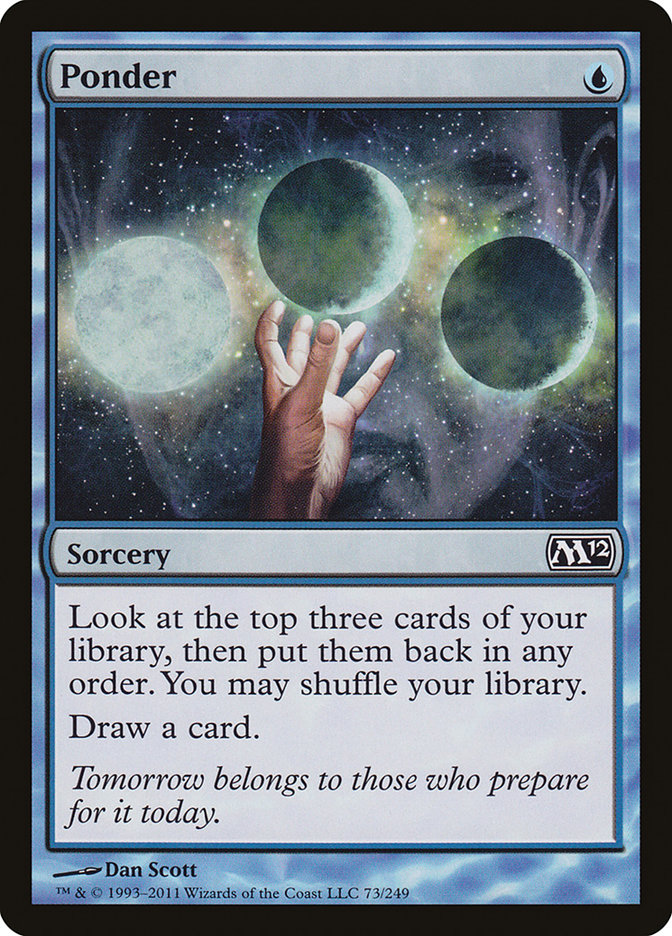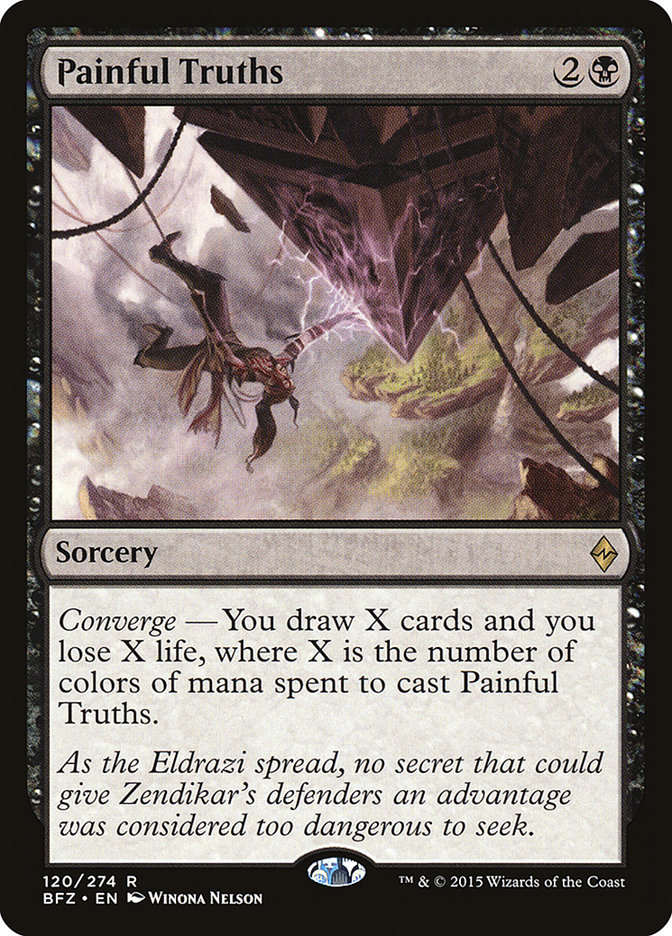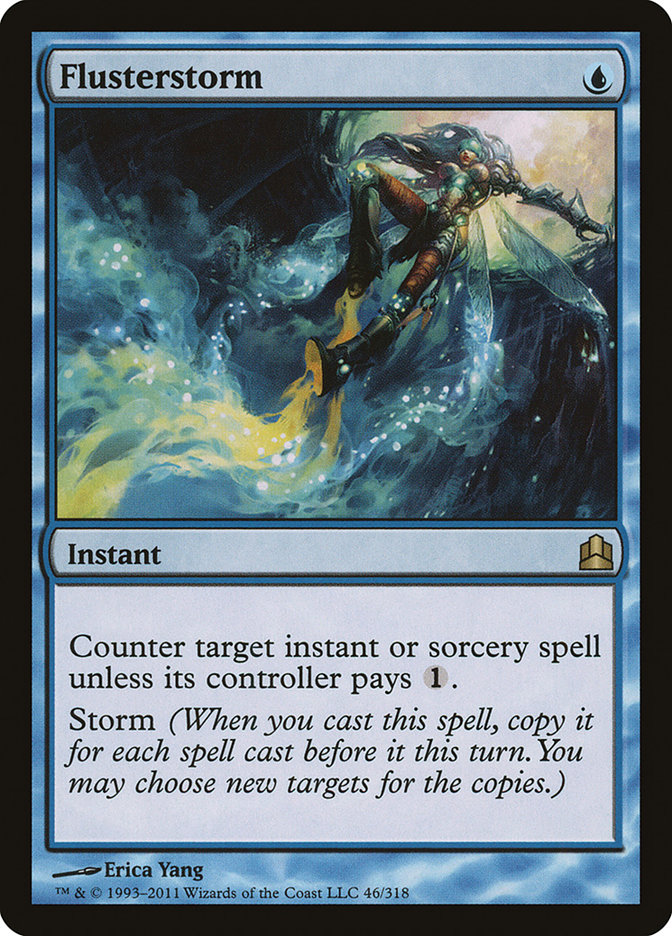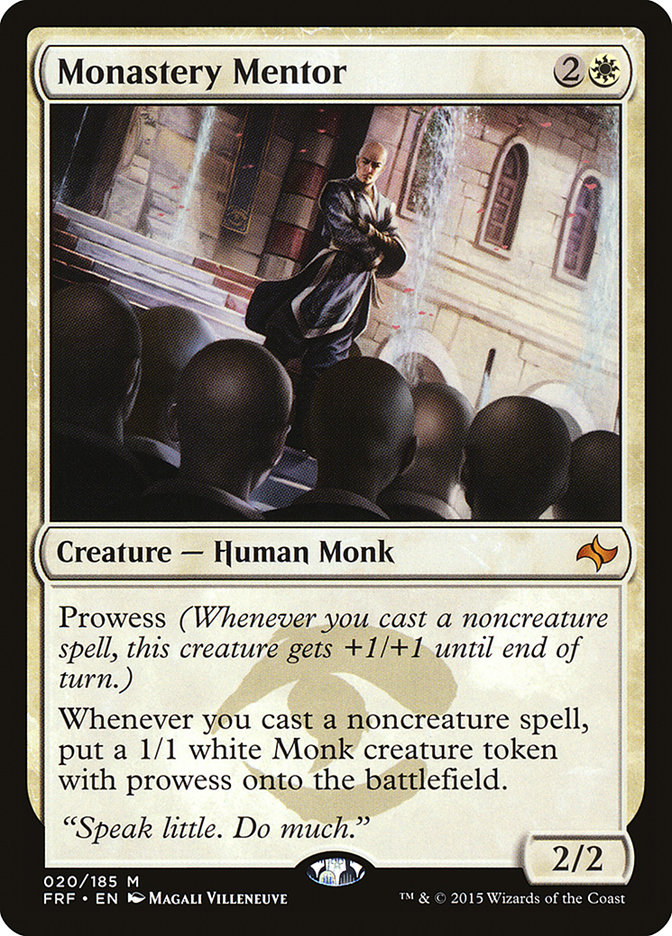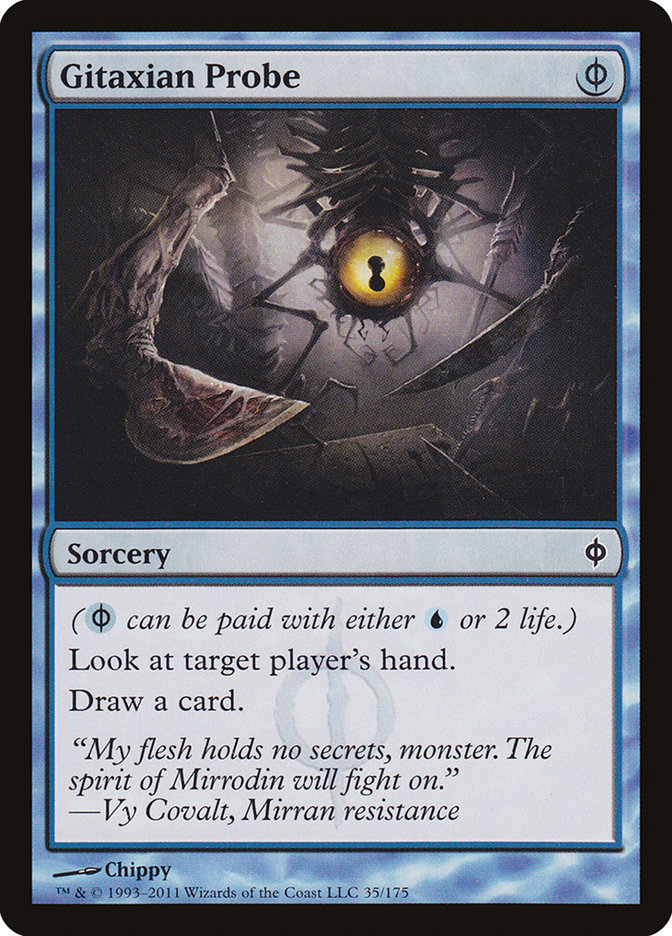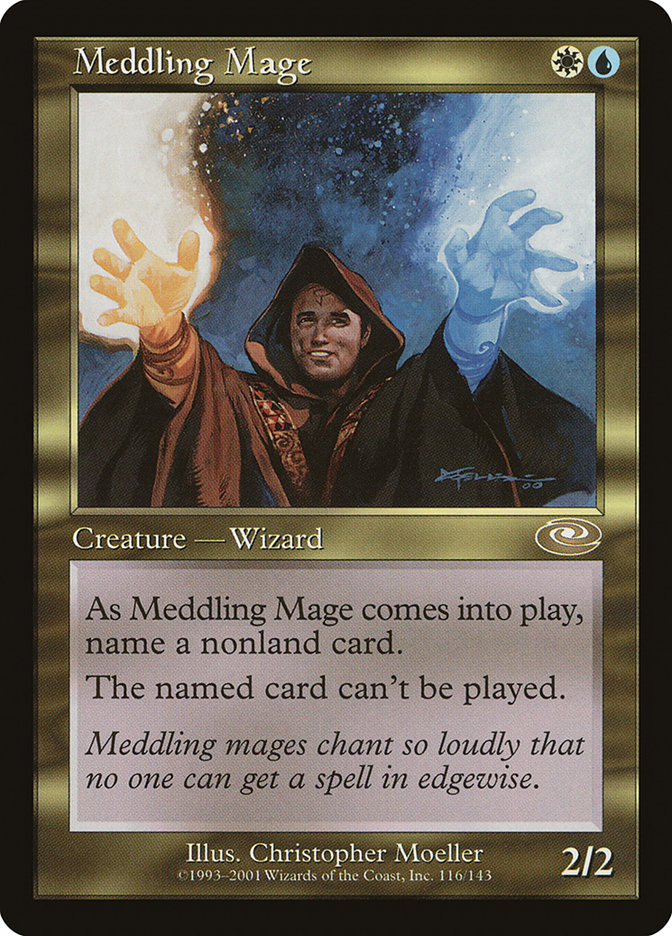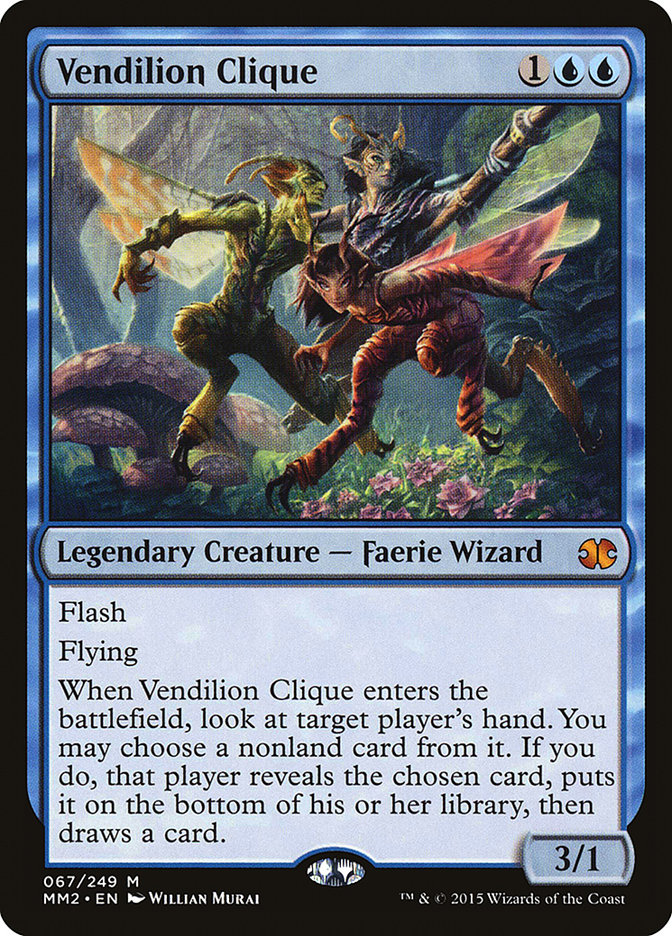For a format that usually doesn’t change a whole lot, Legacy has actually gone through a lot of monumental changes over the past year. First was the
printing of Treasure Cruise, which completely and utterly redefined the format. After Treasure Cruise was banned, it took some time, but eventually Dig
Through Time ended up demonstrating that it was still a more powerful card than the rest of the format. Dig eventually would become powerful enough to
warrant a ban on its own.
After Dig and Cruise bit the dust, the general consensus was that Legacy would just revert back to what it was before Khans of Tarkir came out.
That’s not really how things work, though. To some extent, things will revert, but there are always going to be differences. Blindly expecting to go back
to old builds of old decks and succeed is a one-way ticket to Failsville. For one, there are new cards that exist like Monastery Mentor that are still
going to change the way the format is played.
Secondly, building decks to abuse cards like Treasure Cruise and Dig Through Time can teach us valuable information, even when we no longer get to use
those cards anymore. For example, Ponder in Miracles makes a lot of sense when you’re trying to fuel Dig Through Time. Ponder wasn’t a heavily played
option in Miracles before the printing of Dig, but it became apparent how powerful it was during the Dig era. You would think that after Dig got banned, it
would maybe be worth reverting back to a build without Ponder. However, playing with Ponder in Miracles during the Dig Through Time era really helped
showcase just how good that card was in the deck, even without Dig in the mix. Dig is gone, but Ponder is here to stay.
Another example is a card like Painful Truths. Playing a lot with Treasure Cruise showed us how even when you have to spend three mana to cast a Treasure
Cruise, it’s still a powerful effect. Painful Truths costs more mana than the best case scenario of Treasure Cruise and three life is not irrelevant, but
it’s still a card that looks powerful enough for Legacy on the surface, since we now have something in Treasure Cruise to compare it to favorably. Without
Treasure Cruise existing, I’m not sure anyone would have even considered playing Painful Truths. Painful Truths was a card I was very scared of playing
against last weekend, but I thought that nobody would really end up playing with it. Turns out, I was wrong, as Chapin, Martell, and Sperling ended up
figuring out the Painful Truths about this card when they built their Esper Mentor deck for #GPSeaTac.
One thing that did revert back, however, was that some of the decks that were good before Khans of Tarkir had a chance to be played again. Sneak
and Show fell off the map completely, as Omni-Show featuring Dig Through Time was just a vastly superior combo deck. Without that deck around to ruin
things anymore, Sneak and Show had a chance to go back to being a real force. Shardless Sultai was another deck that struggled to outpace the card
advantage of Dig Through Time but could thrive again in a Digless world. These decks suddenly became viable again; however, they still needed to be tuned
with a more recent metagame in mind.
I expected the big three decks to be Miracles, Shardless Sultai, and Sneak and Show. I felt like Delver variants would likely be most popular deck if you
combine them all together, but there was no telling what combination of Sultai, Temur, Jeskai, Grixis, or Four-Color that people would bother with. Who
knows, someone might have even broken it with a Five-Color Delver brew.
At any rate, I’m here to talk Miracles, not these other decks. It’s important to have these decks on the radar, as any success with Miracles is going to
involve being prepared to beat these strategies. Miracles lost a little bit of power with Dig Through Time getting banned, but honestly, Miracles was
probably the deck that utilized Dig Through Time the worst of any Dig deck. It was a good card, but not deck-defining by any stretch.
Let’s kick off with the list I played at #GPSeaTac:
Creatures (5)
Planeswalkers (3)
Lands (21)
Spells (31)

I scrubbed out pretty early with this list. In retrospect, it’s easy to see why. I went against a lot of my general rules for playing Miracles when I
decided to play this list. This is the style of list that has seen a lot of big success for Miracles over the last few months, and without a lot of time to
test, I just piggybacked off the success of others. When I think about this list, however, there are some things about it that I consider flawed. Others
may like or experience success with them, but I dislike these card choices in a Miracles shell.
First of all, don’t play situational or potentially dead cards in Miracles.
The prime culprit here is the maindeck Pyroblast. I got cute and decided to play one Pyroblast as a hedge against Sneak and Show, Shardless Sultai, and the
mirror match. In Legacy, that kind of metagaming is usually a no-no. My first three rounds of the tournament were against Punishing Jund, Belcher, and Vial
Maverick: three decks where Pyroblast is a completely dead card. While I personally didn’t lose any games because of that Pyroblast, it was clear after
these rounds how big of a mistake it was to play the card. Legacy is a wide open field and people will play whatever they want to play, so trying to
metagame is flawed.
Other examples of cards that I dislike for this same reason are cards like Spell Pierce, Flusterstorm, or Daze. I’ve seen all of these cards in various
builds of Miracles. Hell, I’ve even played them myself. The reason I think these cards are all big stains in Miracles is simple. The gameplan of Miracles
is to drag the game out as long as it takes until you’ve established complete control, and then find a way to win somehow afterward. Cards like
Flusterstorm, Daze, and Spell Pierce get worse and worse as the game progresses, they are only truly good in the first few turns. Yet Miracles is trying to
drag the game out longer and longer, which means that these cards go directly against your gameplan. If you’re trying to push the game past turn 10, keep
away from situational cards that stop being relevant after turn 5.
The second rule I broke is that I played cards that don’t follow the gameplan of Miracles. While Pyroblast is a situational or potentially dead card, it
does follow the gameplan of Miracles. It can help lock a game up late against other blue decks. Monastery Mentor, on the other hand, doesn’t stick to the
gameplan.
When I play Miracles, I have one thought running through my mind every turn of the game. That thought is to reduce as many outs to win the game as possible
for my opponent. Every turn, I want to increase the number of weak or dead draws for them until I reach a battlefield where they simply are locked out from
winning the game anymore. There are some decks, like 12-Post or MUD, where they actually have inevitability and you have to play the aggressor role, but
for most decks, Miracles has the ultimate endgame, and it’s important to play every turn toward that endgame. Take away as many options from them as
possible, each and every turn.
Monastery Mentor in the maindeck is counterproductive to this style of game. The style of game that Monastery Mentor is looking to play is a lot more
aggressive. With Monastery Mentor, you don’t need to necessarily restrict your opponent’s outs every turn of the game. You need to simply prevent them from
winning long enough for Mentor to kill them.
That sounds well and good, except for one thing. Mentor falls short of killing them a lot. When that happens, you’ve expended all your resources into this
one aggressive gameplan designed to kill them quickly, and now you’re ill-equipped to win past that point. I’d rather just play a Miracles build that is
singularly focused and every card is in the deck for the purpose of accomplishing one single goal, rather than these schizophrenic builds that try to take
complete control of the game some of the time, but then try to turbo win with Mentor some other part of the time. These kinds of half and half measures
never seem to really work out.
Another rule I broke is one that I’ve already broken in the past and knew that it was a bad idea. That rule is simple. Don’t play less than four Terminus.
These Mentor lists all shave on Entreat the Angels and Terminus for Monastery Mentor. The idea behind that is that Mentor can sometimes serve as a Terminus
and sometimes serve as an Entreat the Angels. Mentor making a lot of tokens is often the same as Terminus. It effectively invalidates your opponent’s
creatures. Mentor making a lot of tokens can sometimes kill as quickly as Entreat the Angels.
That’s great, except for the times it doesn’t. Like when you have Mentor and your opponent has two Deathrite Shamans and they drain you out way before
Mentor could ever kill them. I would say that sounds like a corner case scenario, except it happened to me twice at the GP. Twice, I drew Monastery Mentor
and lost the game because I couldn’t race fast enough. Twice, I would have immediately locked up the game if it were a Terminus instead.
In fact, a fairly common theme for me at #GPSeaTac was drawing Monastery Mentor on a turn where Terminus would have probably won me the game immediately. I
won some of those games anyway, but it certainly wasn’t nearly as easy as it could have been. Another common theme for me in this tournament was digging
really hard to find a Terminus to lock up the game and failing to find it, and then silently cursing myself for only playing three.
Monastery Mentor can’t replace Terminus. I knew it was a mistake to play less than four. I did it anyway. I got thoroughly punished for it. I basically
deserved what I got. I broke a lot of my rules for how to build and play Miracles, and I really had each and every one of those rule breaks backfire on me.
Now I know better, and I won’t make those mistakes again. Well, at least I hope so.
So with these thoughts in mind, let’s look at a more updated Miracles list:
Creatures (4)
Planeswalkers (3)
Lands (21)
Spells (32)
- 4 Sensei's Divining Top
- 4 Brainstorm
- 1 Counterspell
- 4 Force of Will
- 4 Swords to Plowshares
- 4 Counterbalance
- 4 Ponder
- 2 Entreat the Angels
- 4 Terminus
- 1 Council's Judgment
Sideboard

This looks fairly similar to my last list, but with Monastery Mentor in the sideboard. I cut the two Mentors and the Pyroblast and went up to a fourth
Snapcaster Mage along with the six miracles. I think sideboarding Monastery Mentor is still a very potent plan. People sideboard out removal spells, and
you can bring in Mentor to get them. Some decks don’t play removal spells, and you can bring in Mentor and get them. Some decks actually have inevitability
on you, and you need to bring in Mentor in order to effectively race them. It just isn’t a card I want in my maindeck.
Four Snapcaster Mage might be too many with such a low number of viable spells to Flashback. I actually think a great list is this same maindeck with one
less Jace and one more cheap spell to use with Snapcaster Mage. The issue is that a lot of those cheap spells are really situational, like Pyroblast. I do
really like having the fourth Snapcaster Mage, though, because Snapcaster Mage gets better after sideboard against most decks, when you get to bring in
spells like Surgical Extraction, Flusterstorm, Wear // Tear, and Pyroblast in various matchups. There are so many cheap spells that play well with
Snapcaster Mage in the sideboard that I think having access to four Snaps in the 75 is right.
One option that I played with was having a Preordain in the maindeck as like a fifth Ponder as well as another card to utilize with Snapcaster Mage. It
ended up not being great, as I ran into the issue of just flooding on cantrips and not having the time or mana to use them all. Another idea is a singular
Gitaxian Probe. I know that sounds awful, but hear me out. I’ve actually played Gitaxian Probe in Miracles before. Not only is it good with Snapcaster
Mage, Monastery Mentor, and Meddling Mage, but it actually does help the gameplan of Miracles. Knowing what your opponent is trying to do certainly makes
it easy to restrict their options and cut off their gameplan.
Don’t be surprised if you see me in the future with four Snapcaster Mages and a singular Probe in my Miracles list.
A lot of lists play a second copy of Counterspell, but I’ve never really liked Counterspell very much. Counterspell is a lot like Council’s Judgment in
that it’s a situational card, but a more universal situational card. There are a lot of matchups where Counterspell really sucks, same with Council’s
Judgment, but there are rarely matchups where those cards are truly dead. The upside of these cards are so high that they are worth playing for the few
times where they end up being a 3 or a 4 out of 10 instead of an 8 or 9 out of 10. When you start to play more than one copy of these cards, though, that’s
when you start to have problems where you draw two Counterspells when your opponent has Aether Vial on the battlefield or you draw two Council’s Judgment
against a Storm opponent and find yourself in a bit of a pickle.
One thing that’s important to note about Council’s Judgment is that I often see it abbreviated as “Council’s J.” Therefore, I’ve taken it upon myself to
refer to the act of casting a Council’s Judgment as “shooting the J”, which is a reference to basketball, where the phrase “Shoot the J” means “shoot the
jump shot.” I’ll shoot the J. Council’s J. So when your opponent has a Liliana on six and you draw a white card with CMC 3, well, it’s time to
cast Monastery Mentor and have it get swept up by Liliana’s ultimate
shoot the J and ruin your opponent’s hopes and dreams of winning that game. Nothing but net. I can hear the swish of Liliana going to the exile zone from
here.
Okay. As it turns out, that wasn’t important to note about Council’s Judgment at all. I lied.
The last thing I want to talk about is the sideboard. I also have a philosophy, which you could, I suppose, call a rule, about sideboarding with Miracles.
I want all of my cards to be super powerful cards that are devastating in the matchups I bring them in for. I don’t want “random good cards” as I call
them. Miracles is a super powerful deck and people try to fight the deck by exploiting areas where it is weak. I want each of my sideboard cards to plug
those gaps as effectively and cheaply as possible. I don’t need random jack-of-all-trades good cards because Miracles already is a good deck with powerful
cards, and those kinds of cards don’t actually fix any problems or accomplish anything that the deck doesn’t already do.
That’s why you see Meddling Mage and not Vendilion Clique. Meddling Mage is a powerful but narrow card that is devastating in the matchups where it is
good. Mage is phenomenal against most combo decks, as it can shut out cards like Show and Tell or Infernal Tutor, or other cards that are pretty
instrumental for those combo decks to win with. Turn 2 Meddling Mage is how you beat things like turn 2 Show and Tell off of a Boseiju, a start that is
otherwise unbeatable for Miracles. Cards like Meddling Mage also provide a clock, which is important, because some of these combo decks can break out of a
Meddling Mage lock if you give them enough time.
Vendilion Clique, on the other hand, is the classic example of a “random good card.” Clique is useful in nearly every single matchup. My issue with Clique,
however, is that it doesn’t actually further your gameplan. It’s just a randomly good card. The damage from Clique doesn’t matter too much in fair matchups
because you aren’t pressuring their life total with other cards. The disruption in combo matchups is good, but not as powerful as the disruption from cards
like Meddling Mage or Containment Priest instead. Those cards are more narrow, but they are simply better at accomplishing what they are trying to
accomplish than Vendilion Clique.
I want all of my cards to be as cheap as possible and be the most effective at what I want them to do as possible. Surgical Extraction is a good example.
It’s a narrow card, but it’s free to cast. It’s devastating in the matchups where it is good, and it plays very well with both Monastery Mentor and
Snapcaster Mage. It’s not going to get sideboarded in very often, but when it does, it’s the kind of card that is likely to win me the game when I draw it
because of how big of an impact it has.
Wear // Tear is probably the best sideboard card in Legacy. It comes in for a very high number of matchups. It plays well with Snapcaster Mage as a cheap
spell to Flashback. It also works extremely well with Counterbalance. For those who don’t know how that works, Wear // Tear is either a CMC 1 or CMC 2 when
it’s on top of your deck. If you reveal Wear // Tear to Counterbalance, you get both Wear and Tear. Floating a Wear // Tear on top of your deck is enough
to counter every one and two mana spell in your opponent’s deck. When you cast Wear // Tear fused, however, it has a CMC of 3, which can be important for
breaking up opposing Counterbalance + Sensei’s Divining Top locks, as it forces them to find a CMC 3 card to counter it or they lose their Counterbalance.
Most decks bring in cards like Pithing Needle, Null Rod, Sylvan Library, Sulfuric Vortex, and other random artifacts and enchantments that are good against
Miracles. Wear//Tear handles these problem cards in a pinch and serves as a nasty combo with Counterbalance in situations where you don’t need it. There
are also plenty of very powerful artifacts and enchantments that see frequent play, like Aether Vial, Choke, Blood Moon, Batterskull, Inkmoth Nexus, etc.
Wear // Tear is a house.
When you look at this sideboard, every card is a CMC 1 spell, which plays well with Snapcaster Mage and/or Monastery Mentor, or is a creature that has a
narrow role, but plays that role extremely well. That’s exactly how I like my sideboard to be. I want to cut bad cards in every matchup and replace those
bad cards with the cheapest and most effective answers in the format.
There is one huge flaw with this sideboard, however. I’m pretty weak to a strategy like Shardless Sultai. Powerful but narrow cards are not the kinds of
cards that shine against a deck with a wide variety of threats and two-for-ones. You can’t hate out any one aspect of that deck and hope to win. You have
to simply present cards that go over the top of what they are doing. Mentor can sometimes do that, but is easy for them to answer. Entreat the Angels is
the best card against them, but can be tough to set up sometimes.
If Shardless Sultai continues to be a dominant force in the Legacy metagame, it may be worth revisiting how I built this list in order to improve that
matchup. It could also be worth just accepting a bad matchup versus Shardless Sultai and having a stronger and more streamlined deck for other matchups.
Ultimately, I failed at #GPSeaTac with Miracles. However, I did actually learn a lot. A lot of times after a tournament, you’ll say something like “I did
poorly, but I learned a lot” when you didn’t actually learn very much, you just say that to make yourself feel better. For the full reversal, I actually
felt like I learned a lot from this tournament because it really helped solidify my thoughts about Miracles, but it didn’t make me feel any better. I
wasted a GP in my best and favorite format with a suboptimal list.
At any rate, I gained fresh perspective on why I like playing certain cards over others and how to build the deck. Before this event, I knew which cards I
liked and didn’t like from experience of playing with them, but this tournament really helped solidify why that was. I made a ton of mistakes, but I
actually understand each and every one of those mistakes and why they were mistakes and how to not make them again. That’s definitely worth something.
There’s also a good chance I get to put these ideas to use right away. There is a Legacy MOCS in December that I’m trying to qualify for. MOCS stands for
Magic Online Championship Series. They hold a tournament every month that you have to qualify for, and the winner of each tournament gets a Pro Tour
Qualification and an invitational to an exclusive MOCS tournament with big prizes on the line. Winning a MOCS is a big deal, and I’m excited to be able to
play Legacy again.
Believe it or not, there is actually a chance I don’t play Miracles for that tournament, as I have some other ideas I want to test out, but if that doesn’t
pan out, then you can expect to see me flipping Gitaxian Probe off of Counterbalance to counter Lightning Bolts all day long, and then casting Gitaxian
Probe for two life and dying to exactsies two turns later anyway.
You win some, you lose more.

